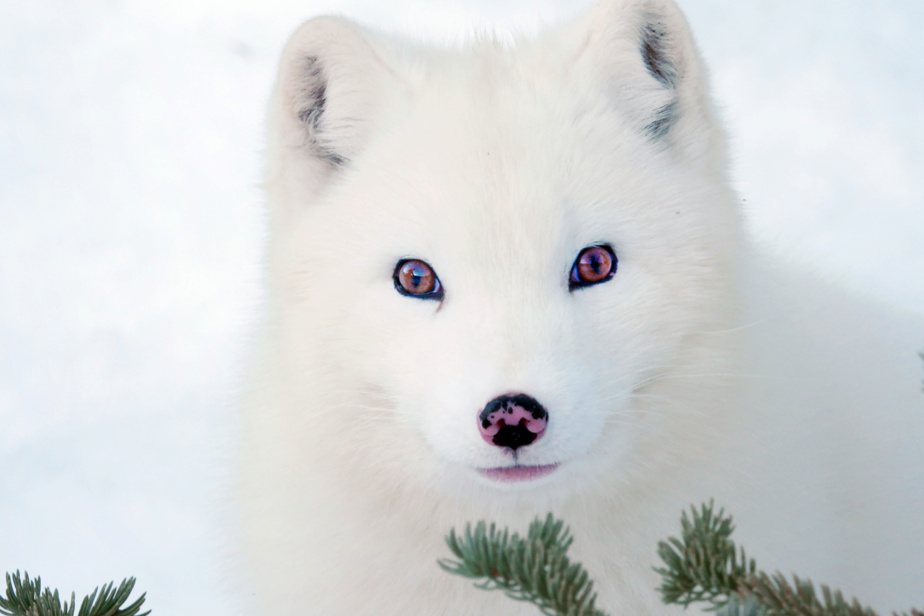By focusing his camera on wildlife, French director Guillaume Maidatchevsky wants to give a voice “to those who have none”. “I want to show that if you take the time to observe nature, if you take the time to look at animals, they tell you a lot of things,” says the man whose most recent film, Kina & Yuk: foxes of the ice floeis released in Quebec cinemas this Friday.
For his third animal fiction, narrated by Sarah-Jeanne Labrosse in its Quebec version, Guillaume Maidatchevsky features a couple of polar foxes who will see their peaceful daily life turned upside down by the hasty melting of the ice. The story was inspired by the rescue of a fox cub stuck on a drifting iceberg, reported in a Canadian newspaper. “I said to myself, this little fox, where does he come from and where is he going? This is the starting point of the film », says the director.
Filming in Yukon
The film crew, made up of French and Canadians, spent two six-week stays in the Dawson City region, Yukon. In temperatures sometimes around -40°C, the cameras captured the isolated town, the snow-capped mountains, the white deserts where an icy wind blows, “these strong and powerful settings which tell a lot about the animals that live there” .
Car au-delà des paysages, ce sont les animaux qui sont en vedette dans le long métrage. Des renards polaires, des loups, des chiens, une martre, une hermine font partie de cette distribution poilue très particulière.
Du plan A au plan D
Si les images saisissantes d’animaux, la voix hors champ et les informations dispersées dans le récit donnent au film des allures de documentaire, il s’agit bel et bien d’une fiction. « Contrairement à un documentaire, le scénario, je l’ai écrit en amont. Quatre-vingt-dix pages dialoguées. […] That’s my ideal story,” explains Guillaume Maidatchevsky.
His actors being animals, how does he then manage to bring his story to the screen? “In this type of film, there are two key words: patience and adaptability,” underlines the filmmaker, who also directed animal fiction Aïlo: an odyssey in Lapland And My cat and me: Rroû’s great adventure.

PHOTO JOËL SAGET, PROVIDED BY GUILLAUME MAIDATCHEVSKY
Director Guillaume Maidatchevsky
“My team – with whom I have been working for a while – always has a plan A, B, C, D… We have to, because we are never going to force an animal,” he explains. .
Although the production uses scent trails to direct the animals, it doesn’t always work.
“If plan A is for the fox to go right but when we say “action”, he goes left, we follow him. The team is prepared for that,” continues the man who was previously a biologist.
Even if the scene is not what the filmmaker had imagined, it may be useful at another point in the story. “As we often film very tightly, I can tinker with lots of things during editing,” argues Guillaume Maidatchevsky.
Trust relationship
The main characters in the family feature aren’t domesticated, but they’re not quite wild either. The two polar foxes were born in an animal sanctuary and were accustomed to the presence of cameras very early in their lives.
A form of trust was established between the fox cubs and the film crew, underlines Guillaume Maidatchevsky. To illustrate his point, he gives the example of a scene where Kina and Yuk fall asleep next to each other in their burrow. “This scene is revealing of my work. Getting a wild animal to fall asleep in front of cameras means that we have succeeded in creating a bond with it. A wild animal would never fall asleep in front of five people. »
With his images that highlight the beauty and strength of Arctic wildlife, Guillaume Maidatchevsky hopes to arouse emotions in moviegoers of all ages.
“Often, people say to me: “Wow! We have the impression that the animal is speaking to us.” It’s because I gave you time with him. You got to know him. […] An animal, if we film it in a wide shot, it’s a fox. But if we film it in a very tight shot, it becomes Kina, it becomes Yuk. This is where the emotions come through,” believes the filmmaker.
He is also convinced that emotions have their role to play in the fight against climate change, the major consequences of which in the Arctic are demonstrated throughout the duration of the feature film.
“If you liked the story of Kina and Yuk, if you entered into their emotions, I hope it will make you want to protect them. And not just them. All arctic wildlife. […] It’s my little fight,” the director finishes.
Indoors
Check the movie schedule
